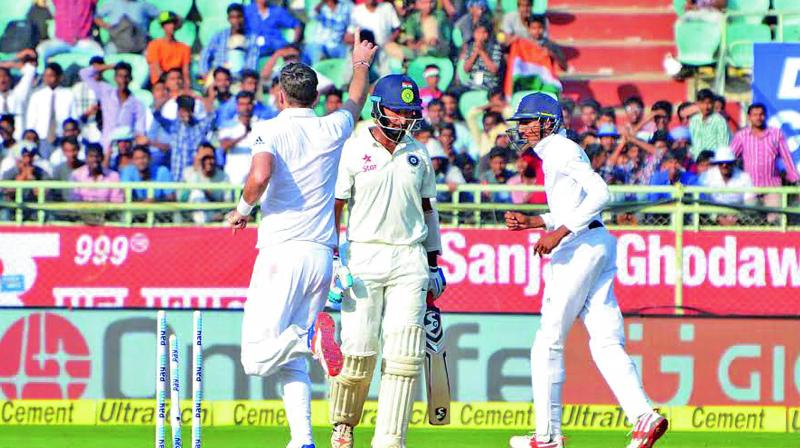Evolved' Virat Kohli effectively counters James Anderson threat
A keen battle between two high quality players can take sport from the physical and mental to the metaphysical level.

James Anderson’s return to the England Test side for the second match raised questions in some quarters about how Virat Kohli would fare against him. The brilliant fast bowler had harried Kohli when they played last in England in 2014. Would it be any different now?
Fans enjoy such rivalries and writers revel in building these up. A keen battle between two high quality players can take sport from the physical and mental to the metaphysical level. All told, it makes for compelling watching.
The Kohli versus Anderson contest in the first innings of the second Test was fascinating. The English fast bowler was constantly probing, hoping to prey on some bad memories that Kohli may have had from the past. I thought he bowled splendidly, but was effectively countered.
The Indian captain’s approach was not just resolute, but authoritative: for a loose delivery, Anderson was like any other, and must be punished. His century in the first innings followed by a half century in the second — both with the team in early crisis — were exemplary innings.
Of course, two years had passed since the summer of 2014. Players learn lessons and evolve. Conditions in India are vastly different from England too, though it must be remembered that in 2012-13, Anderson had been a crucial factor in his team’s win.
I’ve used Anderson only metaphorically to emphasise the point that Kohli isn’t the same batsman he was in 2014. It is not just that he has evolved: rather, has taken a quantum leap.
I am reminded here of speaking to John Woodcock, cricket writer of the London Times, when Sachin Tendulkar reached his century at Perth in the last Test of the 1991-92 tour of Australia.
Woodcock – who turned 90 this year and still follows cricket diligently — had been enamoured by Tendulkar ever since he saw him in England in 1990. So much so that he had convinced his newspaper to fly him Down Under even though England was not playing.
When Tendulkar walked out to bat at Perth, the Indian innings was crumbling. On a pacy, dicey pitch where other batsmen were put to great strife, the Indian teenager batted scintillatingly, earning plaudits from everyone.
This is will be the defining innings of his career,’’ Woodcock told me, overjoyed at Tendulkar’s remarkable effort in difficult conditions. I asked him why he thought so. After all, this was Tendulkar’s third Test century, the second having come in the same series at Sydney earlier.
It’s not just in the runs he has sored, but the approach,’’ explained Woodcock. He is getting into position quicker than, seeing more opportunities to score, looking more comfortable than any other batsman in this Test.
That is mastery over circumstances and opponents which is the hallmark of a great batsman’’ said Woodcock. Sachin has moved on from being a very, very good batsman. He is now in another league.’’
This was insightful. Great batsmen, if I have to extrapolate Woodcock’s explanation, are those who have the ability to excel in all situations: the greater the difficulty quotient, the better their performance their gets.
In fact they relish bigger and deeper challenges. This helps them discover their own métier — in the sport as well as life — as it were. Indeed, lesser the challenge, the more mortal they could appear in a delectable irony of sorts.
The transition can take a while — though not too long. After all, everybody is not a Tendulkar. It can manifest itself through one innings or a series, but is actually the culmination of a rapid learning process and a deepening of desire and ambition.
In Kohli’s case, I believe this happened on the tour of Australia in 2014-15. He had gone Down Under after a disappointing series against England, underwent a metamorphosis, and emerged from Australia glowing with the ability, passion, confidence and runs that only the great possess.

